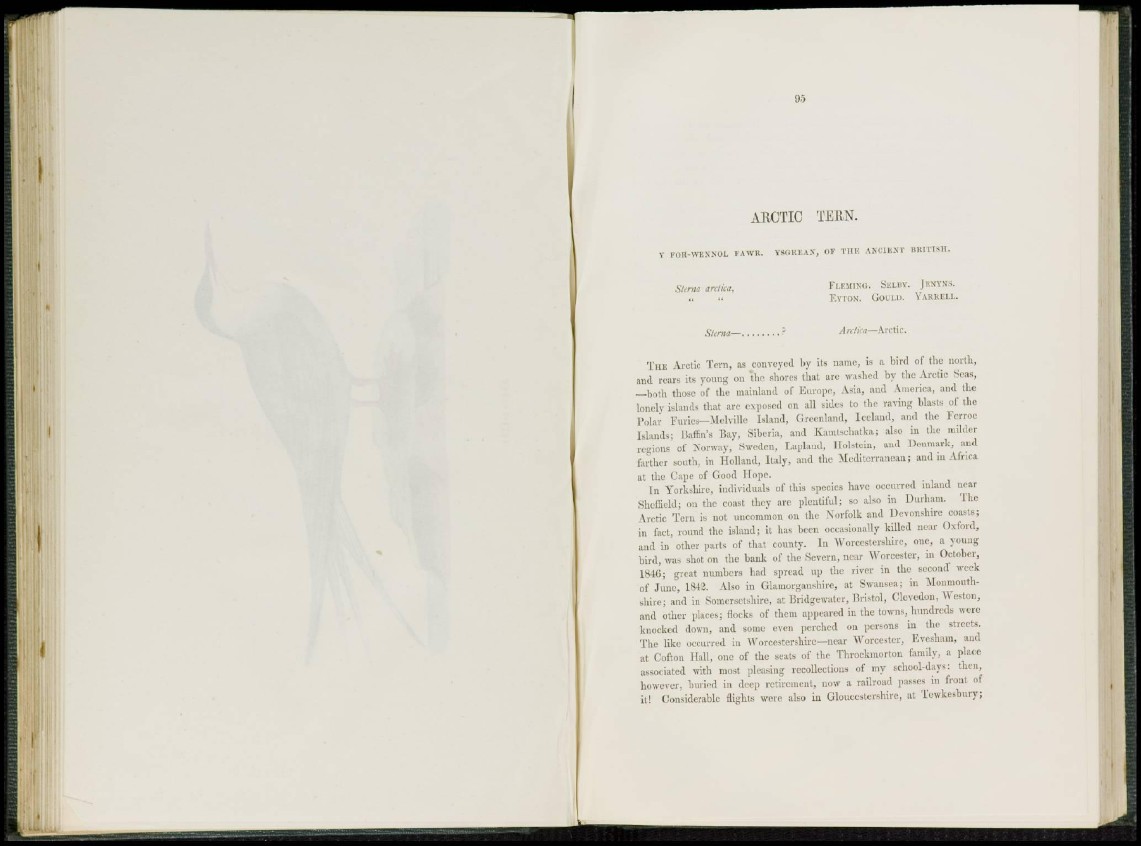
A R C T I C T E R N.
Y FOfl-WENNOL FAWR. Y8GREAN, OF THE ANCIENT BRITISH.
Sterna arctiur, FLEMING. SELBY. JENYNS.
" " EYTON. GOLLU. YARKELL.
Sterna— ? Arctka—Arctic.
T H E Arctic Tern, as conveyed by its name, is a bird of the north,
and rears its young on the shores that are washed by the Arctic Seas,
—both those of the mainland of Europe, Asia, and America, and the
lonely islands that are exposed on all sides to the raving blasts of the
Polar Furies—Melville Island, Greenland, Iceland, and the Ferroe
Islands; Baffin's Bay, Siberia, and Kamtsehatka; also in the milder
regions of Norway, Sweden, Lapland, I [olstein, and I)enmark, and
farther south, in Holland, Italy, and the Mediterranean; and in Africa
at the Cape of Good Hope.
I n Yorkshire, individuals of this species have occurred inland near
Sheffield; on the coast they are plentiful; so also in Durham. '1 he
Arctic Tern is not uncommon on the Norfolk and Devonshire coasts;
in fact, round the island; it has been occasionally killed near Oxford,
and in other parts of that county. In Worcestershire, one, a young
bird, was shot on the bank of the Severn, near Worcester, in October,
1846; great numbers had spread up tlxe river in the second week
of June, 1842. Also in Glamorganshire, at Swansea; in Monmouthshire;
and in Somersetshire, at Bridgewater, Bristol, Clcvedon, Weston,
and other places; flocks of them appeared in the towns, hundreds were
knocked down, and some even perched on persons in the streets.
The like occurred in Worcestershire—near Worcester, Evesham, and
at Cofton Hall, one of the scats of the Throckmorton family, a place
associated with most pleasing recollections of my school-days: then,
however, buried in deep retirement, now a railroad parses in front of
it! Considerable flights were also in Gloucestershire, at Tewkesbury;